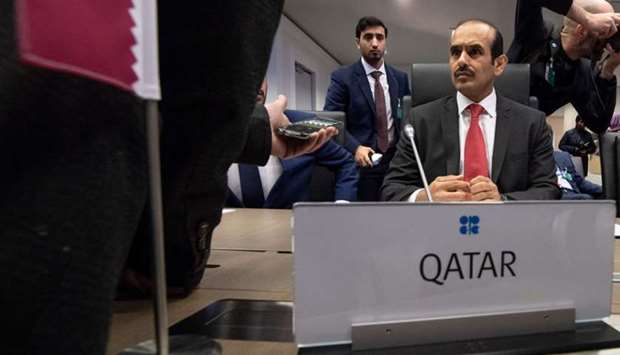Qatar’s exit from Opec (Organisation of the Petroleum Exporting Countries) represents a symbolic message that Doha wants to chart its own course, according to an US economic think-tank.
"Yet this move does not actually lift constraints on Qatar’s natural gas activities, since Opec does not regulate natural gas," the Institute of International Finance (IIF) said in a report.
However, the move sends a message that the country remains committed to pursuing an independent path and focusing on a sector where it is already vying for position as the world’s largest producer, rather than remaining in an organisation that it sees as irrelevant to its growth plan; Qatar is one of the smaller crude producers in the bloc (0.6mn barrels per day), and its production has been falling for a decade.
HE Minister of Sate for Energy Affairs Saad bin Sherida al-Kaabi had on Thursday announced that Qatar will opt out of the oil grouping from January 1, 2019.
Qatar is seeking to cement its position as the world’s largest producer of liquefied natural gas (LNG), given its massive reserves and surging global demand. Following three years of small decline in hydrocarbon production, work is expected to start next year to increase production capacity from 77mn tonnes to 110mn tonnes over the next five to seven years.
IIF said the hydrocarbon activity, which is dominated by natural gas, is set to rise substantially in 2019, following four years of decline.
The expansion is in its initial stages, but seems plausible; Qatar Petroleum issued a tender in October for the first set of drilling rigs, which are expected to come on board in 2019.
Qatar has the world’s largest single natural gas deposits in its North Field, and global LNG demand is surging, so the supply and the market are both in place. As a result, growth in 2019 is projected to increase further to 2.9% driven by the ramp-up in natural gas production
Construction activity, funded through years of accumulated oil and gas proceeds and overwhelmingly reliant on a migrant workforce, is likely to remain strong and the main driver of non-hydrocarbon growth, with significant work still underway to complete the infrastructure necessary for the 2022 World Cup. Nevertheless, the pace has slowed in recent months.
However, the move sends a message that the country remains committed to pursuing an independent path and focusing on a sector where it is already vying for position as the world’s largest producer, rather than remaining in an organisation that it sees as irrelevant to its growth plan; Qatar is one of the smaller crude producers in the bloc (0.6mn barrels per day), and its production has been falling for a decade.
HE Minister of Sate for Energy Affairs Saad bin Sherida al-Kaabi had on Thursday announced that Qatar will opt out of the oil grouping from January 1, 2019.
Qatar is seeking to cement its position as the world’s largest producer of liquefied natural gas (LNG), given its massive reserves and surging global demand. Following three years of small decline in hydrocarbon production, work is expected to start next year to increase production capacity from 77mn tonnes to 110mn tonnes over the next five to seven years.
IIF said the hydrocarbon activity, which is dominated by natural gas, is set to rise substantially in 2019, following four years of decline.
The expansion is in its initial stages, but seems plausible; Qatar Petroleum issued a tender in October for the first set of drilling rigs, which are expected to come on board in 2019.
Qatar has the world’s largest single natural gas deposits in its North Field, and global LNG demand is surging, so the supply and the market are both in place. As a result, growth in 2019 is projected to increase further to 2.9% driven by the ramp-up in natural gas production
Construction activity, funded through years of accumulated oil and gas proceeds and overwhelmingly reliant on a migrant workforce, is likely to remain strong and the main driver of non-hydrocarbon growth, with significant work still underway to complete the infrastructure necessary for the 2022 World Cup. Nevertheless, the pace has slowed in recent months.




